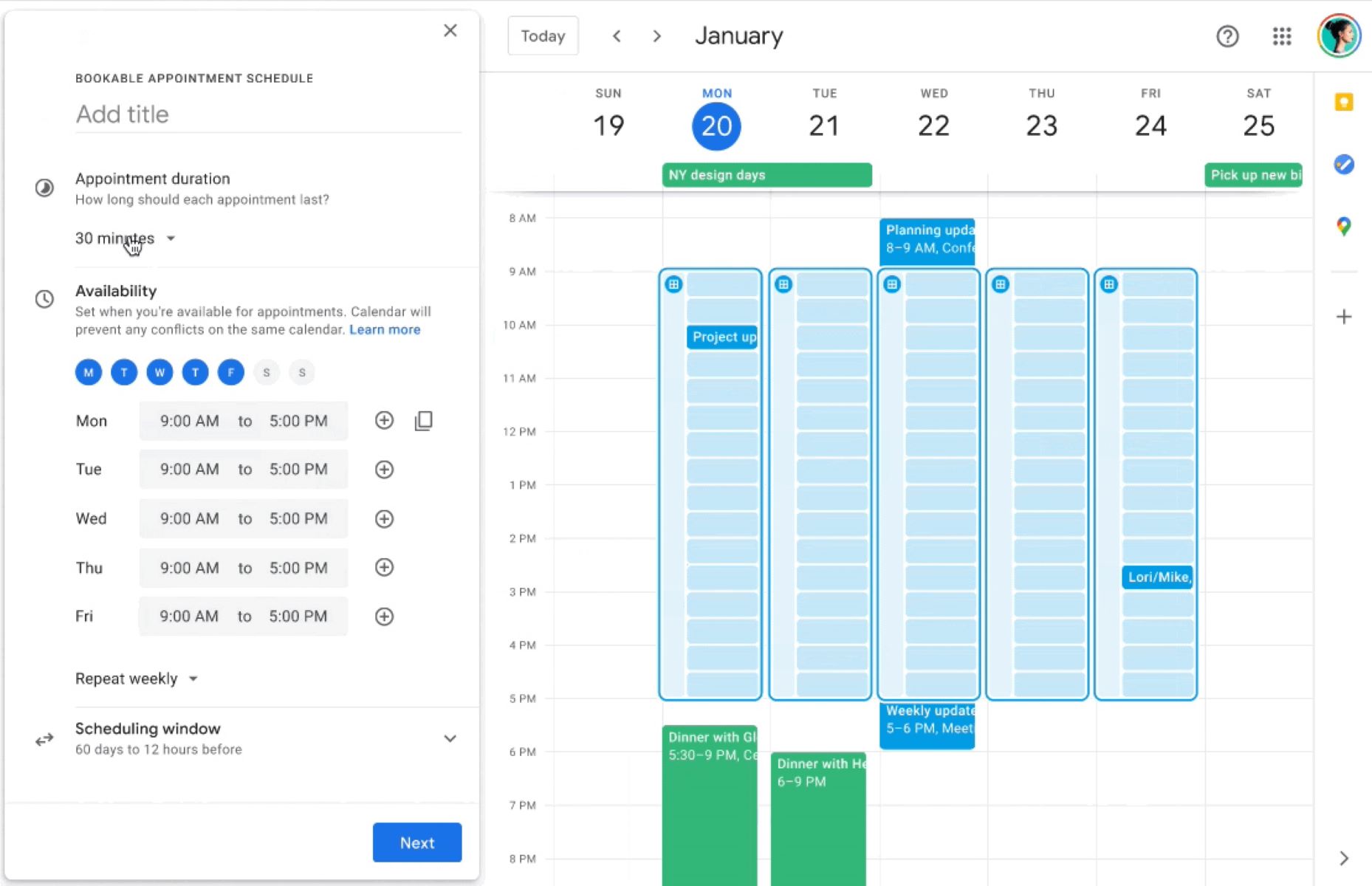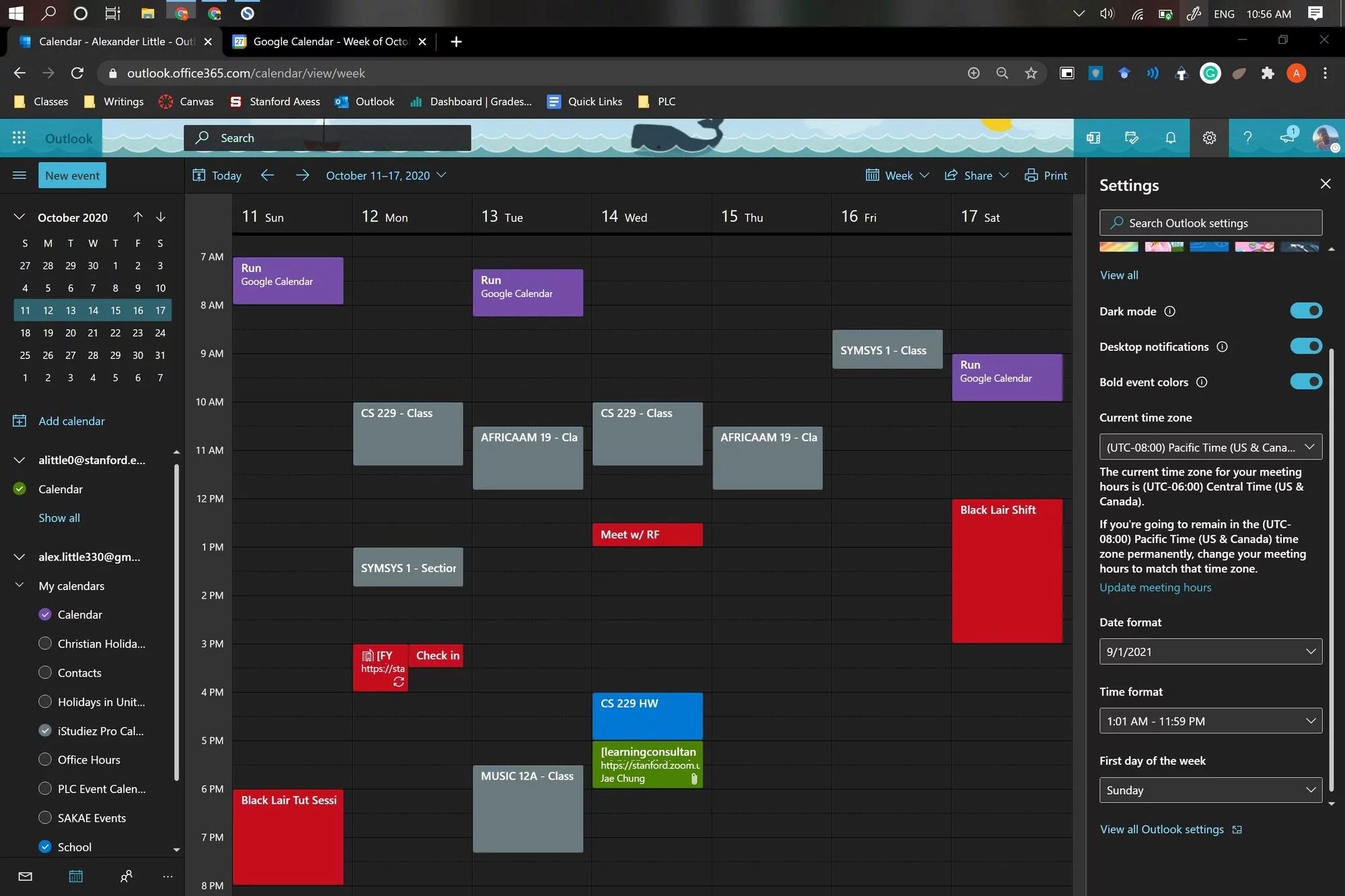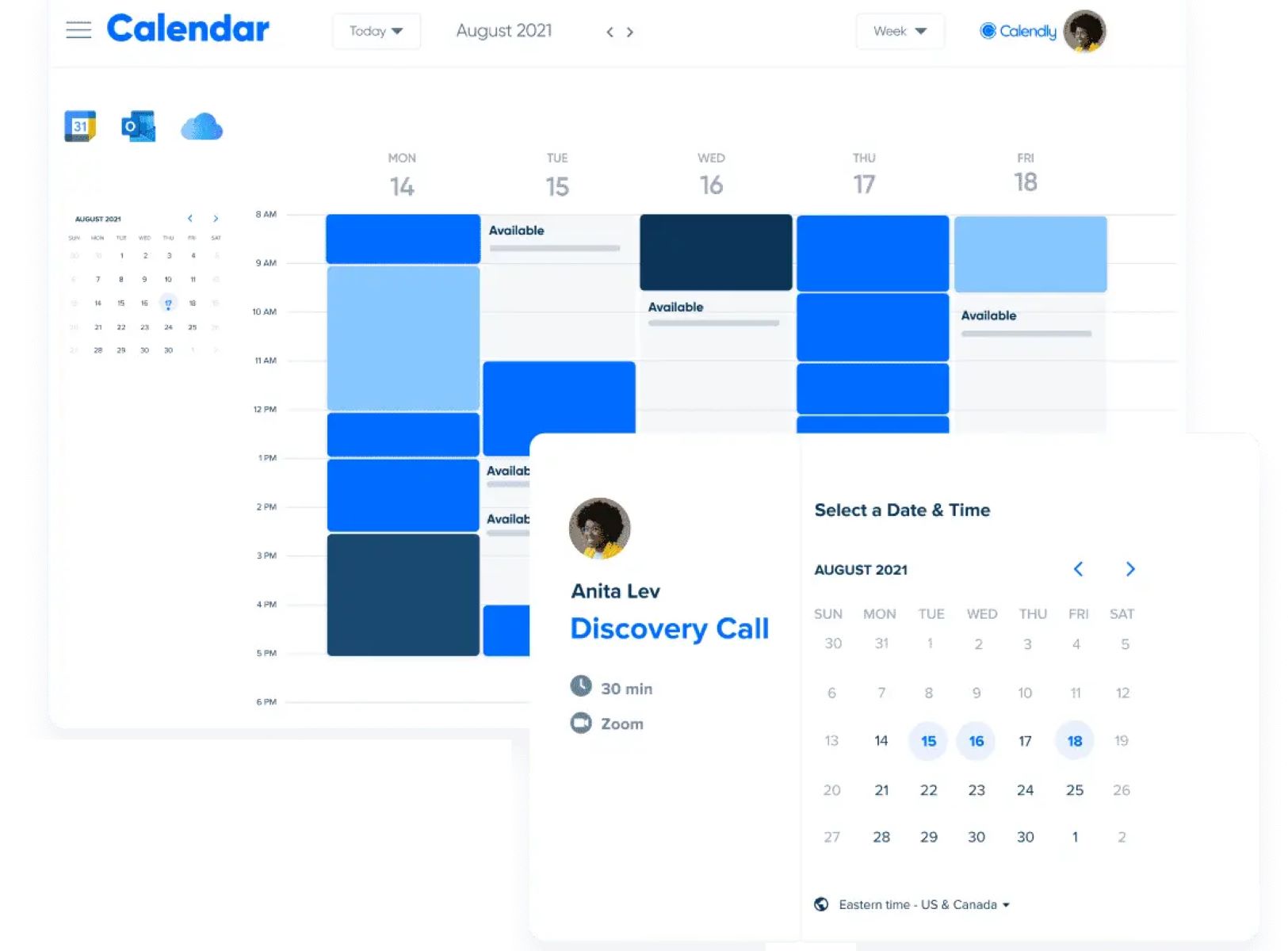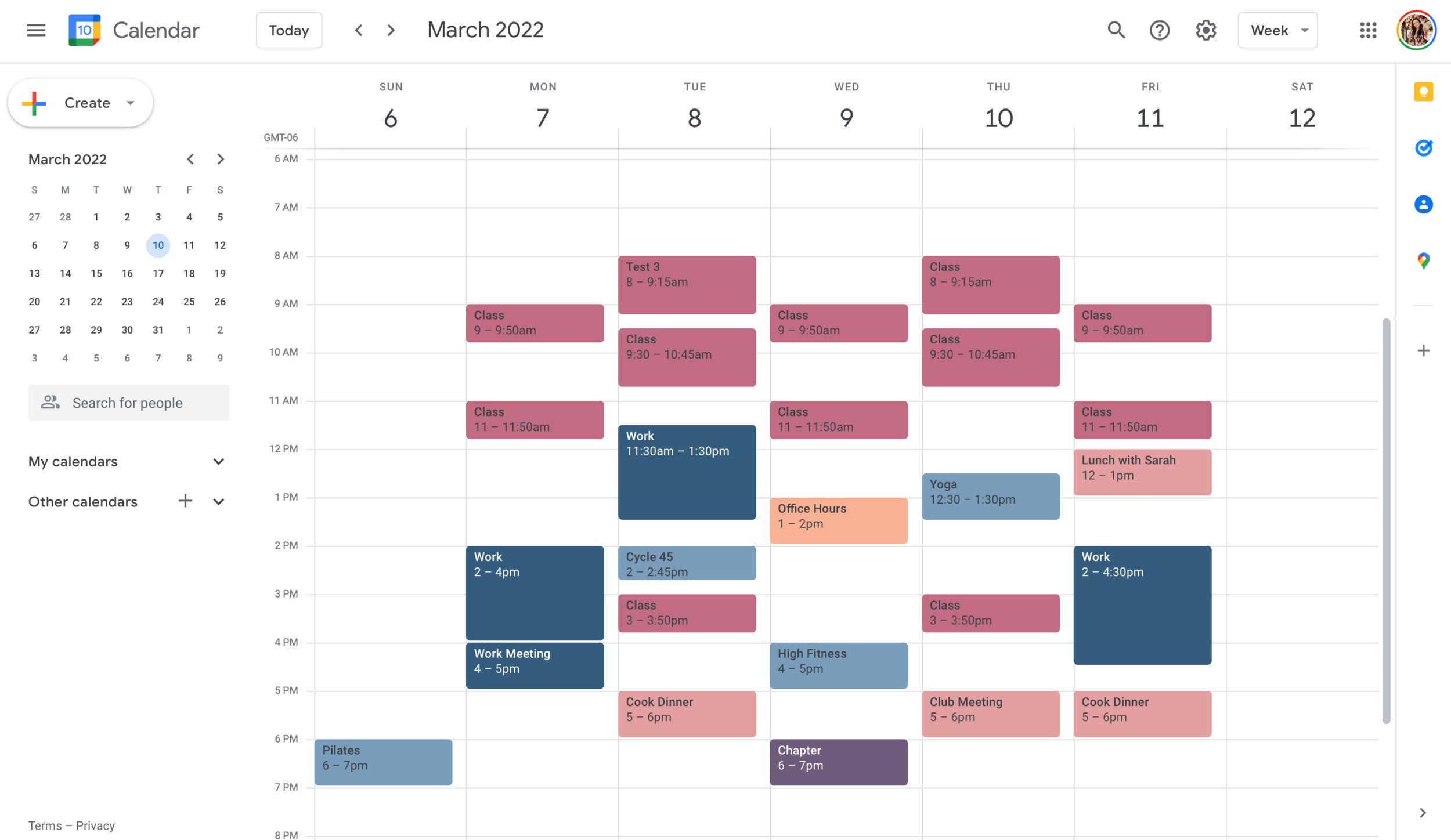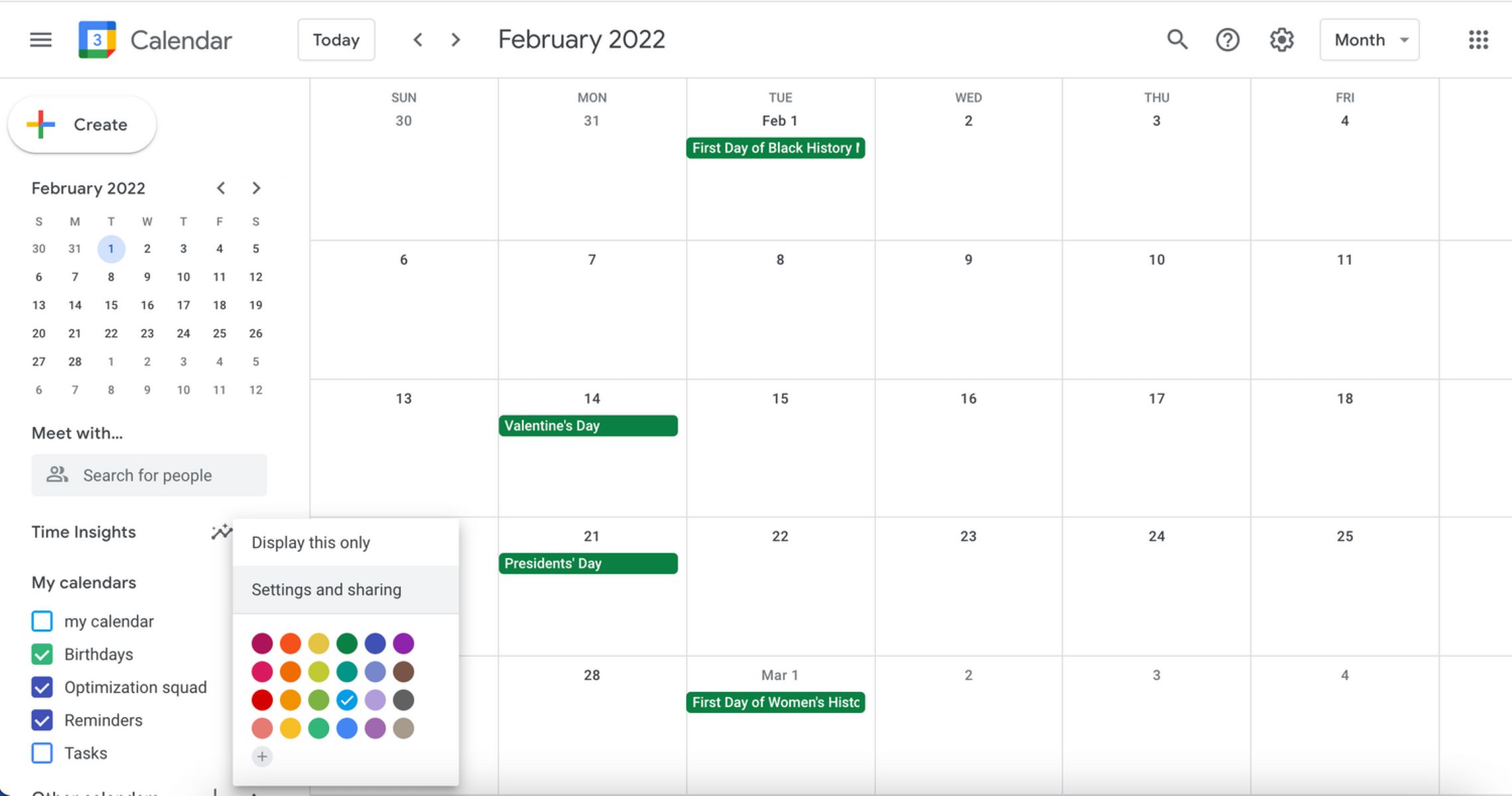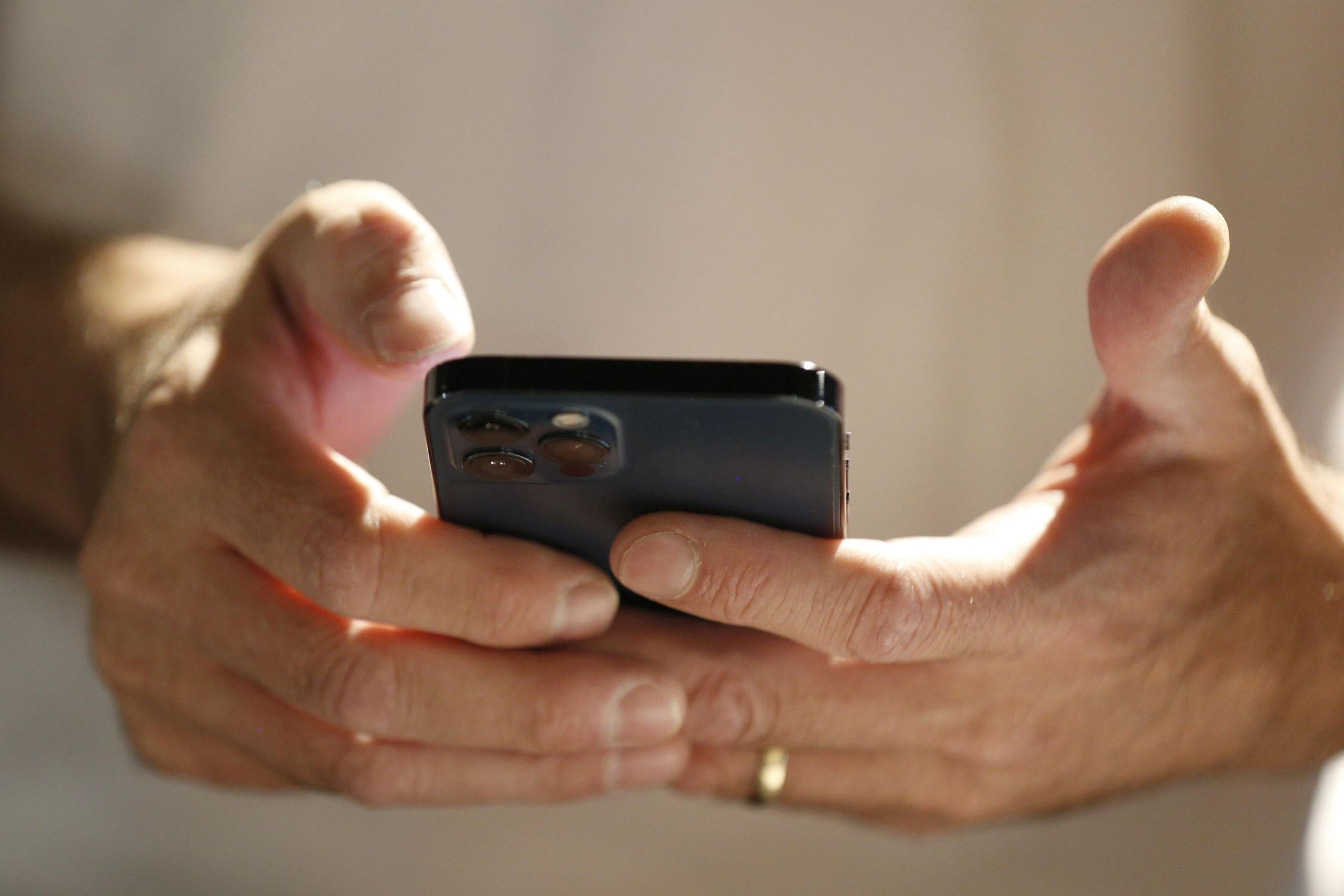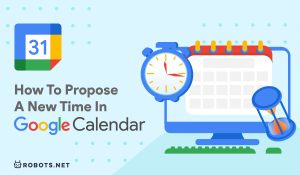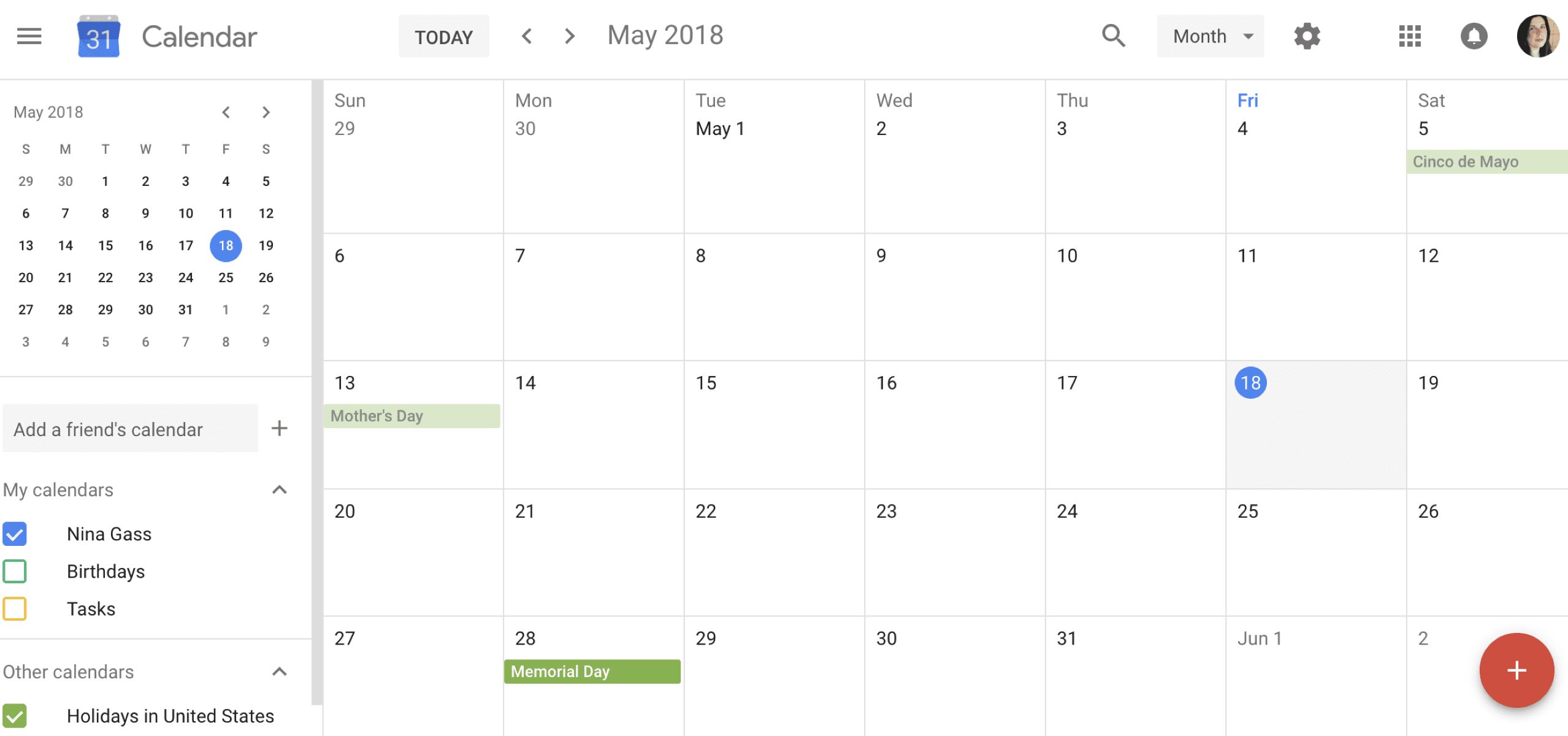Introduction
Welcome to the world of efficient scheduling with Google Calendar! With our busy lives, it’s essential to have a reliable tool that helps us manage our time effectively. Google Calendar is a powerful online scheduling platform that can revolutionize the way you plan your day, week, or even months ahead.
In this article, we will explore the ins and outs of Google Calendar, guiding you through the process of setting it up, creating events and reminders, customizing your calendar, organizing and color-coding your events, sharing your calendar with others, and syncing it with other platforms. By the end, you’ll be armed with all the knowledge you need to become a scheduling pro.
Whether you’re a busy professional juggling work meetings, a student trying to keep track of deadlines and class schedules, or a parent organizing family activities, Google Calendar offers a seamless and intuitive solution. Say goodbye to the days of forgetting important dates or double-booking appointments. With Google Calendar, you have all your events and reminders neatly organized in a user-friendly interface, accessible from any device with an internet connection.
Throughout this article, we will provide step-by-step instructions and useful tips to help you make the most out of Google Calendar. So, grab your digital calendar, buckle up, and let’s dive into the world of efficient scheduling with Google Calendar!
Setting Up Google Calendar
Getting started with Google Calendar is a breeze. Follow these simple steps to set up your own personalized calendar:
- Visit the Google Calendar website or download the Google Calendar app from your app store.
- Sign in using your Google account. If you don’t have one, you can create a new account easily.
- Once you’re signed in, you’ll be greeted with a clean and minimalistic calendar interface.
- Take a quick tour of the interface to familiarize yourself with the key features of Google Calendar, such as creating events, adding shared calendars, and viewing different calendar views.
- Customize your calendar settings by clicking on the gear icon located in the top-right corner. Here, you can adjust your display preferences, time zone, notifications, and other settings to suit your needs.
- Sync your Google Calendar with other devices and applications to ensure seamless accessibility. You can do this by linking your calendar to your smartphone, tablet, or desktop calendar applications, as well as other popular productivity tools like Microsoft Outlook.
- Explore the Google Calendar app on your smartphone to take advantage of its mobile-friendly features, such as receiving event reminders, creating events on the go, and accessing your calendar offline.
By following these steps, you will have your Google Calendar set up and ready to use. It’s a straightforward process that can be completed in just a few minutes, giving you instant access to a powerful scheduling tool.
Creating Events and Reminders
With Google Calendar, creating events and setting reminders is quick and easy. Follow these steps to stay organized and never miss an important appointment:
- Click on the desired date and time on your calendar to create a new event. Alternatively, you can click on the “Create” button or use the “+” icon to add an event.
- Enter the event details, such as the title, date, time, and location. You can also add a description, attach files or links, and invite guests to the event.
- Set a reminder for the event to receive a notification in advance. You can choose from various reminder options, such as receiving an email, a pop-up notification, or a mobile notification.
- Repeat the event if it occurs regularly, such as daily, weekly, or monthly. Google Calendar offers a range of recurrence options to fit your scheduling needs.
- Assign a specific color to the event to easily distinguish it from other events on your calendar. Color coding can help you quickly identify different types of events at a glance.
- Save the event, and it will be added to your calendar. It will now be visible in the day, week, or month view, depending on your preferred calendar display.
- To create a reminder without a specific date or time, click on the “+” icon next to the Create button, and select “Reminder.” You can add a title and set a due date for the reminder.
- Reminders can be created for tasks, deadlines, or any other important items you want to remember. They will appear separately from your events and can be checked off when completed.
By following these steps, you can create events and reminders effortlessly, ensuring that your schedule is organized and that you never miss an important task or appointment.
Customizing Your Calendar
Google Calendar allows you to customize your calendar to suit your preferences and make it visually appealing. Here are some customization options that you can explore:
- Change the calendar view: Google Calendar offers various views, including day, week, month, and agenda. You can easily switch between these views to find the one that works best for you.
- Adjust the time zone: If you travel frequently or work with people in different time zones, you can change the time zone settings in Google Calendar to ensure accurate scheduling.
- Add personal details: Make your calendar more personalized by adding your name, profile picture, or other relevant details. This can be done by accessing the settings menu and updating your profile information.
- Enable keyboard shortcuts: If you’re a fan of shortcuts, you’ll love this feature. You can enable keyboard shortcuts in Google Calendar to navigate and perform actions quickly without using your mouse.
- Create multiple calendars: If you have different aspects of your life, such as work, personal, or hobbies, you can create multiple calendars and color code them for better organization. This allows you to view and manage specific events separately.
- Import and export calendars: You can import external calendars, such as public holidays or sports schedules, into your Google Calendar. You can also export your calendar to share it with others or integrate it with other applications.
- Change the event duration and default reminder time: Customize the default settings for event durations and reminder times to match your preferences. This can save you time when creating new events and reminders.
- Set working hours: If you want to designate your working hours or specify your availability, you can adjust the settings to reflect your preferred time slots. This helps others schedule meetings or appointments with you more efficiently.
- Enable Labs features: Google Calendar Labs offers experimental features that you can activate to enhance your calendar experience. These features are optional and can be accessed through the Labs section in the calendar settings.
By exploring and customizing these options, you can tailor your Google Calendar to meet your specific needs and preferences. It’s a great way to make your calendar visually appealing and functional.
Organizing and Color Coding Your Calendar
Keeping your Google Calendar organized is essential for efficient scheduling. By employing effective organizational strategies and color coding, you can easily manage and differentiate between different types of events. Here are some tips for organizing and color coding your calendar:
- Create separate calendars: If you have various aspects of your life, such as work, personal, or social commitments, consider creating separate calendars for each. This allows you to focus on specific areas when needed and keeps your events organized.
- Assign colors to calendars: To visually distinguish events from different calendars, assign specific colors to each calendar. For example, you could use blue for work-related events, green for personal appointments, and red for important deadlines. This makes it easier to identify events at a glance.
- Add event details: When creating events, include as much detail as possible. This can include the event title, location, description, participants, and any additional notes. The more information you provide, the better prepared you’ll be when the event approaches.
- Use event labels and keywords: Labels and keywords can further enhance organization by allowing you to categorize events. For example, you can add labels like “meeting,” “deadline,” or “birthday” to quickly identify the purpose or nature of an event.
- Utilize different calendar views: Google Calendar offers various views, such as day, week, month, and agenda. Experiment with different views to find what works best for you. For example, the week view might be ideal for a quick overview, while the day view gives you a more detailed look at your schedule.
- Create recurring events: For events that occur on a regular basis, use the recurring feature to save time. This allows you to set up events that repeat daily, weekly, monthly, or on a custom schedule. It ensures that you don’t have to recreate the same event repeatedly.
- Drag and drop events: Google Calendar allows you to easily reschedule events by dragging and dropping them to a different date or time. This flexibility enables you to quickly adjust your schedule to accommodate changes or prioritize tasks.
- Search for events: If you have a busy calendar with numerous events, utilize the search function to find specific events. Enter keywords, event titles, or participants’ names to locate the desired event quickly.
By implementing these organizing and color coding techniques, you’ll be able to navigate your calendar with ease, effectively manage your time, and stay on top of your commitments.
Sharing Your Calendar with Others
Google Calendar makes it easy to share your schedule with others, whether it’s colleagues, friends, or family members. By sharing your calendar, you can better coordinate meetings, events, and activities. Here’s how to share your calendar:
- Open your Google Calendar and click on the settings icon (gear icon) located in the top-right corner of the screen.
- Select “Settings” from the drop-down menu to access the calendar settings.
- Navigate to the “Access permissions” section, where you can set the sharing options for your calendar.
- Click on the “+ Add people” button to invite individuals or groups to view your calendar.
- Enter the email addresses of the people you want to share your calendar with.
- Choose the level of access you want to grant to each person. You can choose between “See only free/busy,” which allows others to see when you are available but not the event details, or “Make changes to events,” which allows others to add, modify, and delete events on your calendar.
- Add a message or a personal note to the invitation if desired.
- Click on the “Send” button to invite the selected individuals to view or edit your calendar.
- To share your calendar with a public link, go to the “Access permissions” section and click on the “Get Sharable Link” button. You can then copy the link and share it with others, allowing them to view your calendar without needing specific email invitations.
- If you want to remove someone’s access to your calendar, return to the “Access permissions” section, locate the person’s name or email address, and click on the “X” icon next to their entry.
Sharing your calendar can help streamline collaboration and improve communication with others. Whether it’s coordinating work meetings, planning social events, or keeping your family members informed, sharing your calendar simplifies the process and ensures everyone is on the same page.
Syncing Google Calendar with Other Platforms
In today’s digital world, it’s common to use multiple platforms and devices to manage our schedules. Thankfully, Google Calendar seamlessly integrates with various platforms, allowing you to sync your calendar across devices and applications. Here’s how to sync Google Calendar with other platforms:
- Sync with mobile devices: To access your Google Calendar on your smartphone or tablet, download the Google Calendar app from the App Store (for iOS) or Google Play Store (for Android). Sign in with your Google account, and your calendar will automatically sync with the app.
- Sync with desktop applications: If you prefer using a desktop calendar application, such as Microsoft Outlook, you can sync your Google Calendar with it. Google provides a sync tool called “Google Calendar Sync” for this purpose. Install the tool, enter your Google account details, and choose the sync options to align your Google Calendar with your desktop application.
- Sync with other online calendars: If you use multiple online calendars, such as Apple Calendar or Microsoft Exchange, you can sync them with your Google Calendar. In Google Calendar settings, click on the “Import & Export” option and follow the instructions to import or sync events from other calendars.
- Sync with other Google services: Google Calendar integrates seamlessly with other Google services, such as Gmail and Google Meet. When you receive an email with event details or a meeting invitation, Google Calendar automatically adds the event to your calendar. You can also schedule Google Meet video conferences directly from your calendar.
- Sync with third-party applications: Google Calendar offers various integration options with popular productivity tools and services. These include project management platforms like Trello and Asana, CRM systems like Salesforce, and communication tools like Slack. Explore the Google Workspace Marketplace to discover and connect Google Calendar with other applications that suit your needs.
By syncing Google Calendar with other platforms, you ensure that your schedule is up to date and accessible across all your devices and applications. It eliminates the need to manually update multiple calendars and simplifies your overall scheduling experience.
Tips and Tricks for Efficient Scheduling
Mastering the art of efficient scheduling can significantly improve your productivity and time management. Here are some useful tips and tricks to help you make the most out of Google Calendar:
- Set reminders strategically: To avoid overlooking important events, schedule reminders at appropriate intervals. Consider setting reminders a day in advance for crucial tasks or meetings and shorter reminders for less critical events.
- Utilize event attachments: Attach relevant files, documents, or links to your calendar events. This saves time searching for related materials and ensures everything you need is readily accessible when the event arrives.
- Create event templates: If you have recurring events with similar details, save time by creating event templates. Use the “Duplicate” or “Copy to” feature in Google Calendar to quickly replicate events and adjust the necessary details.
- Include buffer time between events: Allow yourself some breathing room by scheduling buffer periods between back-to-back events. This gives you time to wrap up one task and prepare for the next without feeling rushed.
- Use calendar search effectively: If you’re looking for a specific event, take advantage of the search function in Google Calendar. Enter keywords, event titles, or participant names to quickly locate the desired event.
- Utilize advanced features: Google Calendar offers advanced features such as appointment slots, which allow others to book specific time slots with you, and the ability to create multiple reminders for a single event. Explore these features to enhance your scheduling process.
- Create private events: Google Calendar allows you to mark events as private, ensuring that their details are not visible to others with whom you have shared your calendar. This is especially useful for personal or confidential events that you want to keep private.
- Enable notifications: Stay informed about upcoming events by enabling notifications on your devices. This ensures that you receive timely reminders and updates, even when you’re not actively using Google Calendar.
- Regularly review and update your calendar: Take a few minutes each day or week to review and update your calendar. Add new events, modify existing ones, and ensure that all the necessary information is accurately reflected.
- Experiment with different calendar views: Google Calendar offers various views, including day, week, month, and agenda. Experiment with these views to find the one that suits your needs and provides the clearest overview of your schedule.
By implementing these tips and tricks, you can maximize the efficiency and effectiveness of your scheduling process. With Google Calendar as your trusty companion, you’ll be equipped to tackle your busy schedule with ease.
Conclusion
Google Calendar is a powerful tool that can revolutionize the way you manage your schedule. From setting up your calendar to creating events and reminders, customizing and color coding, sharing with others, and syncing with different platforms, Google Calendar offers a plethora of features to make your scheduling process seamless and efficient.
By following the steps outlined in this article, you can harness the full potential of Google Calendar and ensure that you never miss an important event or appointment again. Take advantage of the customization options, such as color coding and multiple calendar views, to create a visually appealing and organized calendar that suits your needs.
Sharing your calendar with others allows for better coordination and collaboration, whether it’s for work or personal purposes. Syncing your Google Calendar with multiple devices and platforms ensures that you have access to your schedule wherever you go.
To further optimize your scheduling process, incorporate the tips and tricks provided to set reminders strategically, utilize event attachments, create event templates, and make the most of advanced features offered by Google Calendar.
With Google Calendar as your scheduling companion, you’ll have the tools and functionalities to stay organized, manage your time effectively, and achieve greater productivity. So start leveraging the power of Google Calendar today, and let it simplify and streamline your scheduling experience.







